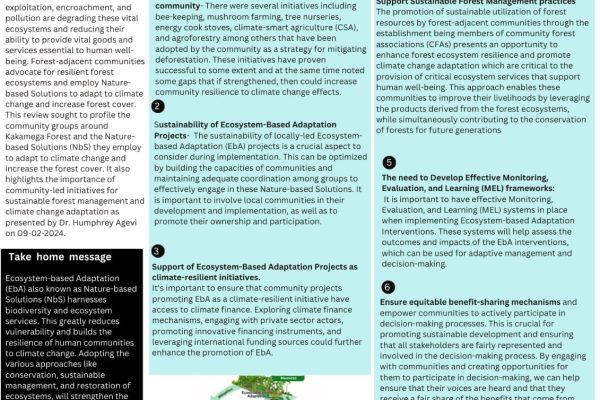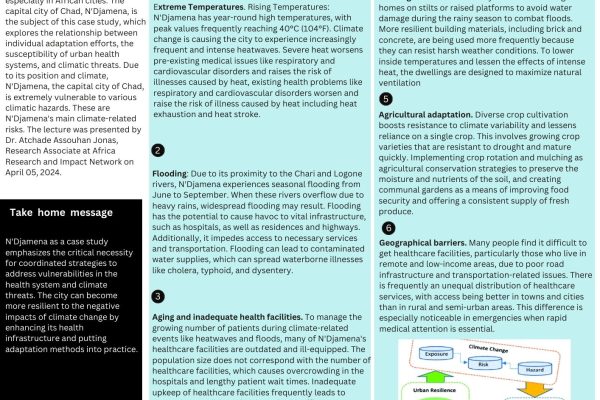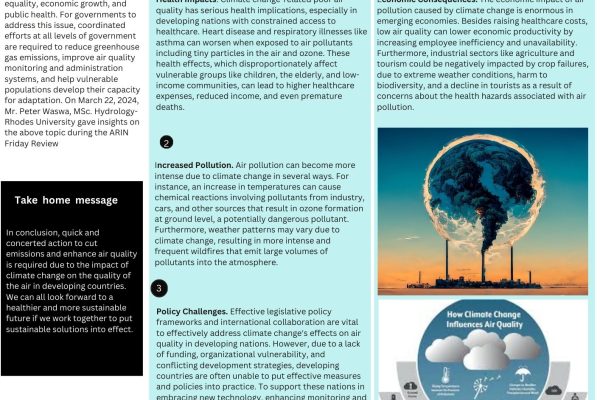Introduction.
Gas flaring, the process of burning natural gas and petroleum-hydrocarbons in flare stacks during oil operations, is a pervasive practice within the upstream oil industry. While initially devised as a means of safety and operational necessity, gas flaring has emerged as a major contributor to global warming and environmental degradation. The emissions produced during this process, including carbon monoxide (CO), nitrogen oxide (NO), and methane (CH4), posses’ significant potential for catalyzing climate change and disrupting ecological systems. Given the scale of its impact, it is imperative to scrutinize the ramifications of gas flaring on our planet’s climate and explore viable solutions to mitigate its adverse effects. On 15th /03/2024, Mr. Emmanuel Chuukwu Ogwu, En vironmental /Laboratory analyst and Quality Control Manager, during the ARIN Weekly lecture presented on how we can effectively reduce the prevalence of gas flaring in oil field operations to minimize its contribution to climate change and mitigate the associated environmental and ecological impacts.
Key Messages.
Legislative Measures: Governments have the authority to enact and enforce legislation that impose restrictions on gas flaring and offer financial incentives to corporations who cut down their flaring activities for instance, subsidies and tax cuts. Compliance of the said measures can be increased by offering awards for putting flare reduction measures in place and penalties for going beyond flaring limits.
Sensitization and Campaigning: Informing the public, investors, and legislators about the negative social and environmental effects of gas flaring may help build support for measures aimed at reducing the impact of gas flaring. Companies may be persuaded to prioritize flare reduction and implement more environmentally friendly procedures by carrying out awareness campaigns.
Infrastructural Investment: As opposed to burning associated gases, oil companies may invest in developing infrastructures to collect and utilize gases produced during flaring. This entails constructing facilities and pipes to collect, process, and then transport gases to marketplaces. Utilizing this gas can lead to positive outcomes for the environment and economic growth.
Partnership and Information Exchange: Promoting cooperation between governments, NGOs, research institutes, and energy companies can help promote technological advances and efficient techniques for minimizing flaring. Working together can yield more efficient solutions and enhance the attainment of flaring reduction objectives.
Community Engagement: In order to address concerns about the health, safety, and environmental effects of gas flaring, it is important to engage with the local people living within the oil fields. Initiatives for flare reduction that are more environmentally friendly and sustainable can result from involving communities in decision-making processes and paying attention to their opinions and thoughts.
Conclusion
Stakeholder engagement technological advances, tax incentives, and governmental regulations are all necessary aspects of a comprehensive strategy to reduce gas flaring. Companies may decrease the environmental and social effects of related gas production while maximizing the value of natural resources by putting systems and structures in place to reduce flaring and promote the best possible use of the produced gases.




